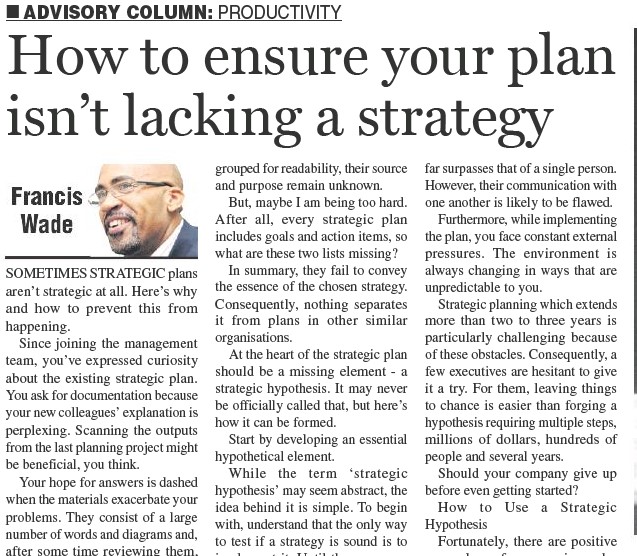Ensuring your plan possesses a genuine strategy is crucial, yet sometimes, strategic plans lack strategic essence. Here’s why this happens and how to prevent it.
Imagine joining a new management team and attempting to grasp the existing strategic plan. You ask for documentation due to the confusing explanations from your new colleagues. However, reviewing the outputs from the last planning project doesn’t provide the clarity you seek. Instead, it overwhelms with numerous words and diagrams, leaving you feeling lost. The strategy fails to emerge from the pages.
But don’t worry—it’s not you. The issue lies in the strategy’s formulation. Often, strategic planning results in nothing more than a wish-list or a laundry-list.
The wish-list resembles a child’s letter to Santa—dreams of a pony, a helicopter, and a 65-inch television. Similarly, the strategic plan includes all good things imaginable without any hard choices being made.
Conversely, the laundry-list mirrors disorganized ad-hoc tasks lacking clear reasoning. Even when categorized for readability, their origin and purpose remain obscure. They reveal a lack of real thought.
But let’s not be too critical. While every strategic plan includes goals and action items, these lists miss conveying the essence of the chosen strategy. Consequently, they fail to distinguish it from plans in similar organizations.
At the core of a poor strategic plan a crucial element is missing—the strategic hypothesis. It might not be officially named as such, but its essence is critical.
To craft this essential hypothetical element, understand that strategic hypotheses, though sounding abstract, are simple in concept. Recognize that testing a strategy’s validity only happens through implementation—until then, it’s an educated guess, a hypothesis.
Why this approach? Because true strategic planning begins with incomplete information, lacking valuable historical data to predict success. Additionally, the human element and flawed communication within leadership contribute to unpredictability. Moreover, the ever-changing external environment adds another layer of variability.
This unpredictability poses challenges, making long-term strategic planning daunting for some executives. They find leaving things to chance easier than forging a hypothesis that demands multiple steps, significant investments, and years of effort.
However, positive examples exist of companies incorporating game-changing strategic hypotheses. Take Steve Jobs and Apple in 2000, during the Dot-Com Bust. Despite adversity, they formulated a 10-year strategic hypothesis—shifting from selling high-end desktops to interconnected devices like the iPod, iPhone, and iPad. This innovation led Apple from near-bankruptcy to become the world’s most valued company.
Jamaica’s GraceKennedy, in the 1990s, facing currency challenges, devised a 25-year vision (GK2020) to enter financial services and overseas markets. This move saved it from disaster and yielded monumental results.
In all strategic hypotheses, intricate links exist between proposed actions and desired outcomes. Apple and GK couldn’t guarantee success with limited information, yet their bold moves changed their trajectories.
So, can your executive team craft a game-changing strategic hypothesis? Though not easy, doing so could make all the difference.

